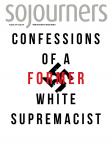FIFTEEN YEARS AGO, Richard Florida argued in The Rise of the Creative Class that cities fostering brainy interaction, creativity, and innovation would thrive, since modern capitalism was increasingly knowledge-based. His projections were acclaimed by artsy, back-to-the-city types (including many church planters) and scorned by activists and the low-income residents that gentrification displaced.
The critics were on to something, because since then many big cities have indeed gotten sexier, but not necessarily more reliable, especially for the masses. From 2006 to 2014, average incomes declined by 6 percent, while average rent prices soared by 22 percent. Today, about 21 million American renters are putting 30 to 50 percent of their income toward rent, with 30 percent representing the “cost-burdened” threshold.
Heeding his critics (and the evidence), Florida changes course in The New Urban Crisis, focusing on the big data that might lead policymakers and ordinary citizens to consider more-egalitarian solutions.
“As the affluent and advantaged return to the cities, they colonize the best locations. Everyone else is then crammed into the remaining disadvantaged areas of the city or pushed further out into the suburbs,” he writes. He names multiple cities and neighborhoods where this has occurred, drawing on data from government entities and news outlets that he charts and maps in the back of the book.
Florida calls this “winner-take-all urbanism.” The most affluent get wealthier while the blue collar and service classes that largely populated cities during the last half of the 20th century watch their cost of living increase and wages stagnate. Somewhere in the middle is the creative class, the bohemians and entrepreneurs who make a living but feel the squeeze.
“This new geography of class is deeply damaging to our economic and social fabric,” Florida writes, noting that while gentrification might improve schools, libraries, and other services and amenities in some parts of cities, suburbs are often declining. Longer work commutes further strain finances for the working poor who have been pushed to the city outskirts.
Florida had high hopes that a Hillary Clinton win could encourage greater top-down government analysis and solutions for cities and suburbs. He hoped to see more emphasis on federal housing policies, land taxes, mass transit aimed at stitching together the complex U.S. socio-economic patchwork, and, finally, a minimum wage set at 50 percent of the local median income, making service and working-class jobs more representative of the middle-class ideal. He envisioned a national department of cities and urban development to help bring these concepts together.
But with Trump at the helm, Florida says the best option may be increased civic and political engagement at the community level.
FLORIDA WAITS until the second-to-last chapter of the book to chew on the urban crisis worldwide, which is far more shocking than in the U.S. More than 60 percent of the infrastructure needed to accommodate the world’s growing population over the next 50 years has yet to be built. In the next century about 7 to 8 billion people—roughly equivalent to the world’s current population—will live in cities in the developing world.
And while words such as “innovation” and “entrepreneurship” are trendy in the international development sector, Florida is quick to acknowledge the shortcomings of this DIY strategy. He points to studies showing that poor people have great ideas but very little time or resources to execute them.
As the tumultuous Trump administration unfolds, The New Urban Crisis might become a coveted text for big data. It was released just as government web pages on topics such as climate change were removed and mere months before John H. Thompson, director of the U.S. Census Bureau, abruptly resigned. His departure may impede demographers working toward the 2020 census, an integral study for determining better distribution of resources for cities and suburbs.
It’s hard to imagine any of Florida’s suggestions playing out in the current political climate, but one can always hope. “Now more than ever, we have the basic logic of urban-led growth on our side,” he writes. “Yet, history does not always progress in a simple, linear fashion. We may move backward before we can go forward again.”

Got something to say about what you're reading? We value your feedback!

